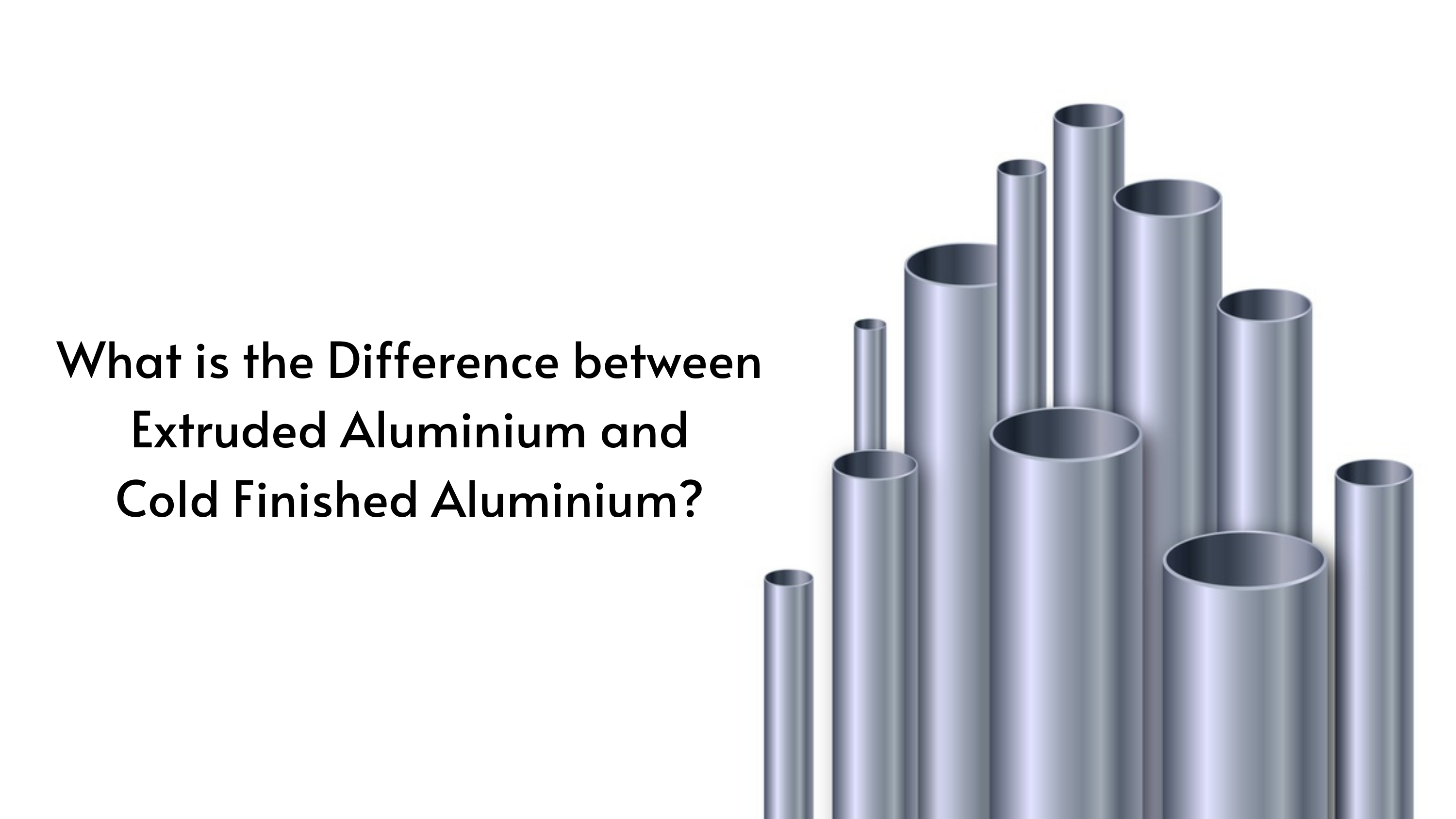What is the Difference between Extruded Aluminium and Cold Finished Aluminium?

Aluminium is one of the most versatile metals in production today. In many industries, aluminium is used in an almost endless number of shapes to manufacture goods for various industries. It is no wonder, with such flexibility, that there are many different methods of producing aluminium goods. The extrusion process and the drawing process are two of the most widely used methods for the manufacture of aluminium. There are a few main differences while comparing the two. Read on to know about the processes of aluminium extrusion and drawing, as well as tips on how to select which one is right for your project.
- Cold Finished Aluminium Products:
The cold finishing of aluminium is more generally referred to as cold drawing or cold rolling, which are methods of aluminium cold finishing by pulling material into what is referred to as a draw die or rollers. In comparison to heating it first, the term cold simply means shaping the metal at room temperature. A cold drawing can be defined as the manufacturing process of a bar, tube, or wire in which a metal rod is pulled without preheating through a die.” Cold drawing improves the metal’s mechanical properties and gives a captivating finish to the finished product.
Cold finishing, such as corrugated aluminium, can also manufacture sheet products and it is a process conducted at room temperature to produce tolerances of extremely near outer diameter while the microstructure is cold finished.
“Rolling” is in general, a method that uses a pair of rolls to shape the materials. Based on the temperature of the metal being used, there are two rolling processes, hot-rolling and cold roll-forming in the aluminium making process. The method is called hot-rolling if the temperature is above the metal crystallisation temperature; otherwise, it is called cold-rolling. Cold-rolling can improve the strength of the material and enhance the surface finish. Cold finishing or forming processes are typically divided into four main groups: pressing, bending, drawing and shearing. For example, aluminium roll forming requires a long strip of sheet aluminium to be bent continuously into a defined cross-section. For each set, the strip moves through successive sets of rolls, forming a gradual part of the bend before completion of the desired cross-section or profile.
2. Extruded Aluminium Products:
A manufacturing process that has been around for a long time is the aluminium extrusion process. This process has been used by metallurgists and manufacturers as a popular method for producing a variety of metal parts and other materials. Aluminium extrusion is a common forming process for many manufacturers, mainly owing to the relatively low tooling costs and its ability to shape lightweight parts. By heating the aluminium and pushing it through a die, extruded aluminium is made. The form of the finished product is what comes out on the other side. It is cooled and then stretched after the product comes out of the die to prevent any twisting that happens during the cooling process. Extruded aluminium gets stronger as it hardens. At room temperature, the hardening process can take place, but because it can take time, most manufacturers use heated rooms to rapidly temper the aluminium.
Extruded aluminium tubing is a common product that uses this technique and there are two primary types. One type is formed using high temperature, pressure and welds from an aluminium tube that is split and then resealed. Often, the seam produced during this process is visible to the naked eye and is not ideal for use under intense pressure so the seam splitting is at risk. The second method forms aluminium tubes by moving a hollow billet through a die. This produces a seamless tube and can be used for pressurised gases and liquids.
In conclusion, for all kinds of aluminium processing techniques and the materials that are made from them, there are benefits. Moreover, the strengths and weaknesses of the metal created by each process vary. It is possible to use both methods to produce identical finished products, there are a few variations between the two. Such variations include:
Cost: The aluminium extrusion process appears, in general, to be cheaper than cold processed aluminium. This is because cold processing involves a greater set of instruments and materials to finish.
Products: For the processing of various types of goods, extrusion and cold processes will also be used. Extruded aluminium products, for example, can be used to produce tubes, doors, window frames, brackets, and railings. Whereas, cold finished aluminium products create products such as cans and pots and also to create tubing.
But for most end-users, the deciding factor is always whether the component is easily obtained and easily made accessible.

